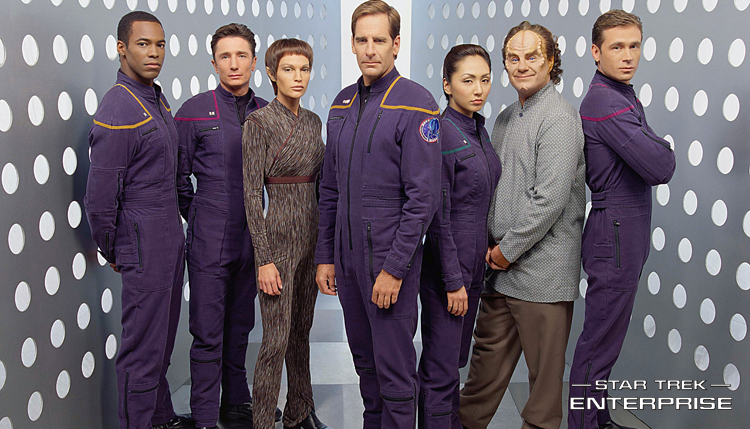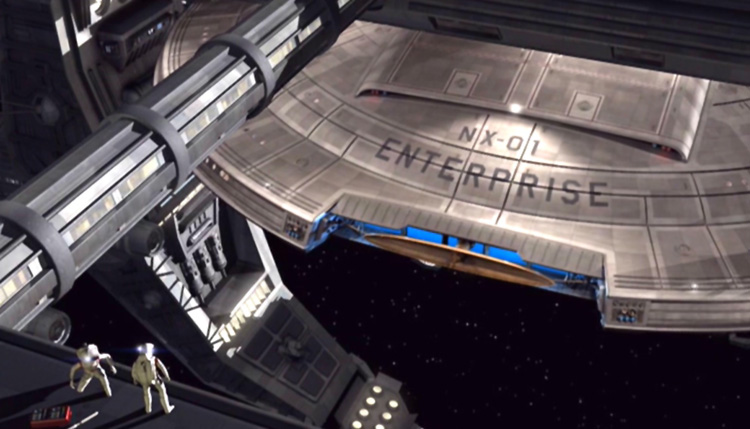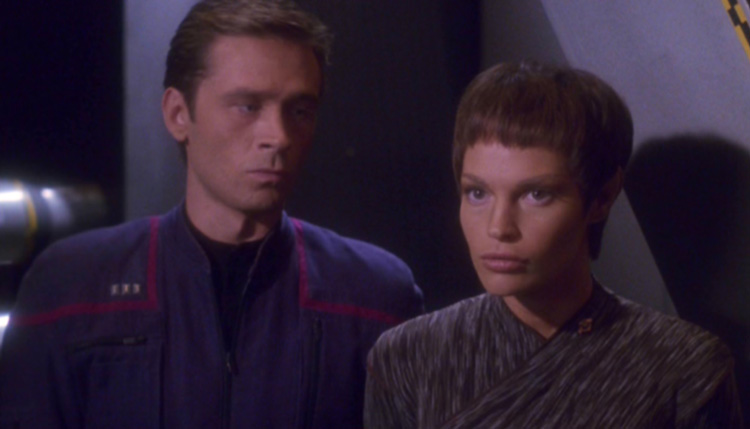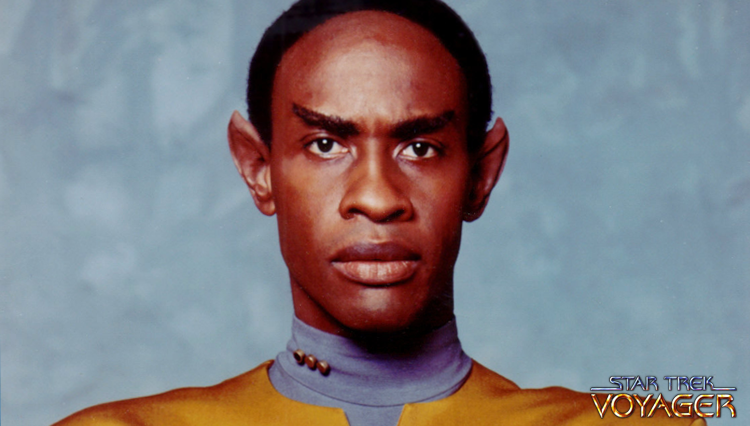
“Where no man has gone before.”
You have to hand it to Rick Berman for keeping the candle lit going on fourteen years after the premiere of Star Trek: The Next Generation. Rather than leave it to the newbies, the inexperienced, unqualified scrubs that haunted UPN (who demanded a new franchise product weeks before Star Trek: Voyager’s finale premiered), The WB, and Fox, Berman and Brannon Braga started fleshing out the pilot episode for Enterprise, “Broken Bow.” This was a different time, when the fans flooded Berman’s in-box with hate mail and blamed him for the “death” of a franchise. Star Trek fans tend to be frightened of change; of any new cluster of cells that threatens to poke holes through established canon. Witness the amount of vitriol Discovery has absorbed in less than two years of regular production.
The hostility was the same in 1987 when Star Trek: The Next Generation premiered, and it was no different to late September of 2001 when Enterprise debuted. Little did anyone realize at the time, “Broken Bow” was the best and the strongest pilot to ever debut in the franchise. Sorry, but it’s true. We start with action, and already there’s something wrong with this picture. A Klingon man is running through a cornfield in Broken Bow, Oklahoma. Wait a minute, what? On top of that, he’s being chased by two aliens we will soon come to identify as Suliban. These are some freaky dudes who can bend and shape themselves (like Tooms from the classic X-Files episodes) to get around those tight corners. The Klingon manages to outwit his slippery foes but is then, in turn, shot by a farmer.

Thirty years before, little Jonathan Archer is putting the finishing touches on his remote control spaceship model and uttering those now-famous words, “To boldly go where no man has gone before…,” which, it turns out, were spoken by Zefram Cochrane (played in a quick cameo by James Cromwell). As the Broken Bow incident unfolds, Starfleet is finishing bench tests on its first warp five vessel, Enterprise, soon to be commanded by an adult Archer (Scott Bakula) who, along with mentor Admiral Forrest, is incensed at the Vulcans’ mandate that they monitor the ship’s first mission by placing a Vulcan (Jolene Blalock’s T’Pol) on the bridge as First Officer. We have much more confident writers with Berman and Braga establishing canon (for a change); the realism is upped with astronaut-looking costumes and the fear that should always be associated with space exploration, as well as the importance of language and communication.
There is also the shock of tension with the Vulcans. The Vulcans do not want Archer to return the injured Klingon back to his homeworld of Qo’noS (hard to spell); rather to engage a smaller, less human crew to politely leave Klaang on the Klingon door-step. They want to delay the first mission of Enterprise, but Archer and Forrest aren’t having it. Along the way, Archer assembles his team, including fetching linguist Hoshi Sato who manages to convey anxiety in a realistic way (unlike the borderline personality “quirks” of a later character such as Tilly) without losing anything of herself in the transition. Hoshi is seduced into joining the mission by the promise of studying the Klingon language. Once underway, she attempts to translate Klaang’s demented shouting. All she gets is something about the Suliban and Sto’Vo’Kor (and “stinky boots,” but we’ll chalk that up to the delirium).

An alien force penetrates the ship and steals Klaang, and this is when we meet the Suliban. It occurs to me that for later franchises, we have enemies and villains all set up from the beginning that then disappear or take a back-seat to even worse bad guys. The Suliban were set up to be the bad guys, but as the show progressed, we were given the Xindi. Cardassians were the chief bad guys on Deep Space Nine until the Dominion was introduced. Same for the Ferengi of Star Trek: The Next Generation who were supplanted by the Borg. Archer discovers a plot by the Suliban to instigate civil war among the Klingons, for reasons that may or not involve time travel and consequences revealed at a later date.
Like Voyager’s “Caretaker” pilot, this is bare-bones storytelling and plot progression. We’re a little looser with our language, and there’s not much room for protocol in this cowboy-age of space exploration. Nobody stands on ceremony (except maybe the Vulcans) and the threats to the ship and crew feel real. Bakula channels Shatner with his chest-out, balls-to-the-wall reactions, and takes a bit of getting used to after 14 years of diplomacy and Picard maneuvers.
Twice a week, Star Trek Rewind explores the Star Trek universe. From Archer to Janeway, Kirk to Picard, and Georgiou to Sisko — boldly read what no one has read before!




